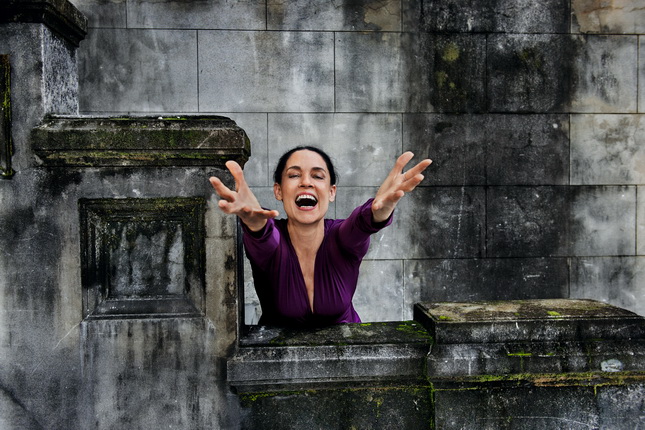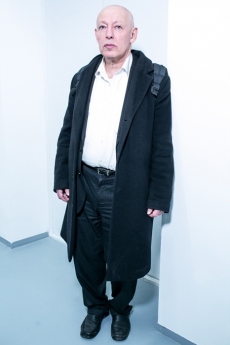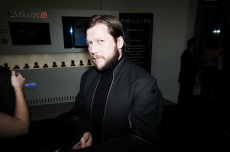Pirelli Calendar 2013 by Steve McCurry






Pirelli calendar 2013 by Steve McCurry
Pirelli calendar 2013 by Steve McCurry
Pirelli calendar 2013 by Steve McCurry
Pirelli calendar 2013 by Steve McCurry
Pirelli calendar 2013 by Steve McCurry
Pirelli calendar 2013 by Steve McCurry
Kirov, 1.08.2013—22.09.2013
exhibition is over
The Vasnetsov Brothers Art Museum
Karl Liebknecht street, 71
kirov-artmuzeum.ru
Share with friends
Exhibition shedule
-
9.04.2013—5.05.2013
Moscow
Multimedia Art Museum
-
1.08.2013—22.09.2013
Kirov
The Vasnetsov Brothers Art Museum
For the press
The greatest visual magic is not otherworldly, witchy weirdness but rather an illumination of the everyday, when familiar things look marvelous. Streets and city walls and skies, in a startling derangement, begin to take on the irrationality of a dream. Because you recognize certain objects — the dog, the chair, the window — the other elements are more startling: what is that blaze of light, and what is that woman doing in the doorway? Tantalizing and suggestive, bleeding with color, the vision is given force through the visible presence of a power figure — in the case of these photographs, the beautiful woman, who dominates like a tropical priestess.
In this epiphany of unexpectedness and delight, such beauty always beckons. It is impossible to see the Steve McCurry photographs of Rio and its people and not wish to be there. The magic of Rio, the city of high contrast, is something palpable, an uplifting luminosity that is rare in most cities. But in Rio it is a part of its identity, its daily life, something joyous, as well as, at times, evoking a sort of melancholy. Intense color can inspire joy, or terror, or desire, even pathos or a mood almost of holiness.
The Rio depicted here suggests the history of Brazil, a country transformed — colonized, plundered, and repopulated until it exploded with European and African intensities as well as all its indigenous feathered shrieks. The photos show a homegrown culture of impulses and improvisations — syncretic, an anthropologist might say, a fusion of cultures, a people taking possession of different rituals or beliefs and making them their own. That too is magical. The music and dance and even the graffiti adds to the transformation; the human touch in the painted walls, the casual dress, is the Cariocas’ assertion of their own lives and their neighborhoods, turning their walls into murals, and even their bodies into art objects, as body builders and dancers.
The capoeira — shown here as vigorous tumbling — is distinctly Brazilian and centuries old, combining movement and music that is both an aesthetic and a system of combat, like magic in action: a martial art, sometimes improvisational and artful. And the graffiti is not (as in some cities) vandalism, but an enhancement, mural or maquillage on a wall, a street, a doorway, a house-front.
These images show a newly imagined world, epitomized by the shot from the heights of Rio, looking like the face of our planet in creation, the seas receding in pools of pinkish light from the distant mountains to reveal a city being born, lights winking from the coast, mountains reflecting tall buildings, a city where people seem happiest outdoors, on the street, in alcoves and markets, on the rooftops.
Here are images of abundance — plenty of everything, food, fruit, color, music; an abundance of light, too, but sometimes wayward and revealing light. The young girl at the market stall, anxiously clutching her head, stands before an impressive pile of multicolored peppers. She is alone, but so are many of the other people in the city, especially the solitary air of the woman walking away, along the Arcos de Lapa aqueduct, with a teasing suggestion of «follow me.» She is a telling shadow; there is as much life in these shadows as in naked light.
And each image in this sequence is vitalized by a telling detail, whether it is a retreating cat, a skinny dog, or a shadow; the anxious eyes, or the gesture of human awkwardness that we easily recognize and can relate to. Physicality pervades the images; the human element is powerful. These are people of flesh and blood — real people in a real place, exuding a joyous confidence. In the simplest, a woman’s pregnancy is revealed in a stark and serene shot. For the most complex, consider the photo of the model in the doorway, the Brazilian flag daubed on the wall, the woman at the window looking away, a partial mural of a sorrowing child, a real tree, a wet street.
Paul Theroux
«I would say I am a street photographer doing ‘found situations,’» McCurry says, describing himself. That one shot is a triumph of captured observation, a whole narrative of solitude, reflective figures in a vibrant cityscape «You can photograph nudes anywhere,» Steve McCurry says. «But these models are clothed, and each of them has her own charity. They’re purposeful and idealistic. So I wanted to show them in a particular place. That’s why Rio was perfect.»
Steve McCurry has been traveling and taking photographs for almost forty years. I have known him for thirty of them. Steve is a great photographer because he is a resourceful traveler and a humble person, and the hardest working creative person I know. He is always watchful, absolutely hawkeyed for the way things are, for finding the humanity in every picture. One of these pictures, of Sharbat Gula the green-eyed Afghan teenager he shot in a refugee camp in 1984 has been called one the most widely recognized photographic images ever. Being Steve, he tracked the woman down 17 years later and photographed her again.
He was a traveler before he was a photographer, and he has always been a risk-taker. As a 22 year old, looking for subjects, he hitchhiked from his home in the US and traveled through Mexico and Central America, as far as Panama («I bought some lenses there»). Before he was thirty he had traveled through Yugoslavia and Bulgaria, and alone down the Nile, into Uganda and Kenya; he lived a vagabond life in India for two years in the late 1970s, and visited Nepal and Thailand. And he sneaked into Afghanistan, disguised as an Afghan peasant. He was still in his Twenties.
Famously, early in 1979, during a period of civil war, he grew a beard, dressed in native garb, a shalwar kameez, and followed a group of five Afghans from Chitral in the rugged Northwest Frontier Province in Pakistan to the Kunar Valley in Afghanistan, photographing burned out villages and bombings and atrocities. He walked the whole way, on mountain paths, living on berries, sleeping in huts. Ten months later, when the Soviets invaded Afghanistan, his were the first photographs to be published in Europe and America, of defiant Afghan mujahedin.
After another visit to Afghanistan, and assignments in Beirut, Baluchistan, and the Cambodian border, he acquired the reputation as a war photographer. «But that wasn’t what a wanted. I wanted to be a freelance, going wherever I wanted to go.»
He got his wish — in his travels, in India, South America, Japan and Africa he has dedicated himself to his art, looking for the light; many of his pictures are historic, and he has incidentally chronicled in his photographs the habits and routines and costumes of a vanished world. «I am proud of the locations and the settings and the light in this project,» Steve McCurry says of the Rio shoot for the Pirelli calendar. «The mission is in finding light, the right time of day, the right place, and then trying to make it all work. Light is everything.»
by Paul Theroux
Pirelli Company, the world’s fifth largest tyre producer in terms of sales, considers Russia to be strategically important market. The country is characterized by an expanding economy, strong local demand on tyres and a driving role in winter premium segment tyre market, where Pirelli is already a major player and where it plans to become the world leader by 2015.
Having commercial presence on the Russian market, Pirelli has achieved the goal of placing production sites in Russia by signing the agreements for the transfer from Sibur Holding to Pirelli and Rostec (Russian Technologies up to January 2013) joint venture of the Kirov plant in December, 2011 and the Voronezh plant in February, 2012.
The Kirov Tyre Plant (KTP) presently employs about 2,600 people, with a production capacity of 6.5 million pieces a year. By 2015 Pirelli plans to increase Pirelli brand production up to 60% of total production.
The Voronezh Tyre Plant (VTP) also produces Pirelli premium tyres. In January 2013 a new line of the full production cycle was launched. The most modern and high technological equipment was bought and mounted, and this allows to call VTP the most advanced tyre production site in the country. By 2014 a production capacity will be increased up to 4 million tyres a year (now — 2 million tyres).
At the moment, the two plants are undergoing implementation of technology and production processes, as well as know-how with regards to logistics, quality control and organization of activities in order to ensure that the production is aligned with Pirelli high standards.
Pirelli total investment amount in Russia is over 400 million euro: 222 million is already inside the transfer of the assets to the joint venture; over 200 million of investment are forwarded to the plants development. In 2012 Pirelli sales volumes reached 200 million euro and by 2014 this figure is supposed to be doubled. The production volume will go from 8.5 million pieces (as per 2012) up to 10.5 million in 2014. Both plants employ about 4000 people at the moment.
Together with Pirelli tyres production for the Russian market, the investment into the plants of Kirov and Voronezh will contribute to strengthening Pirelli presence in the Nordic countries, markets with strong growth in the winter segment. The Swedish distribution chain Dackia was acquired for realization of this target.




































